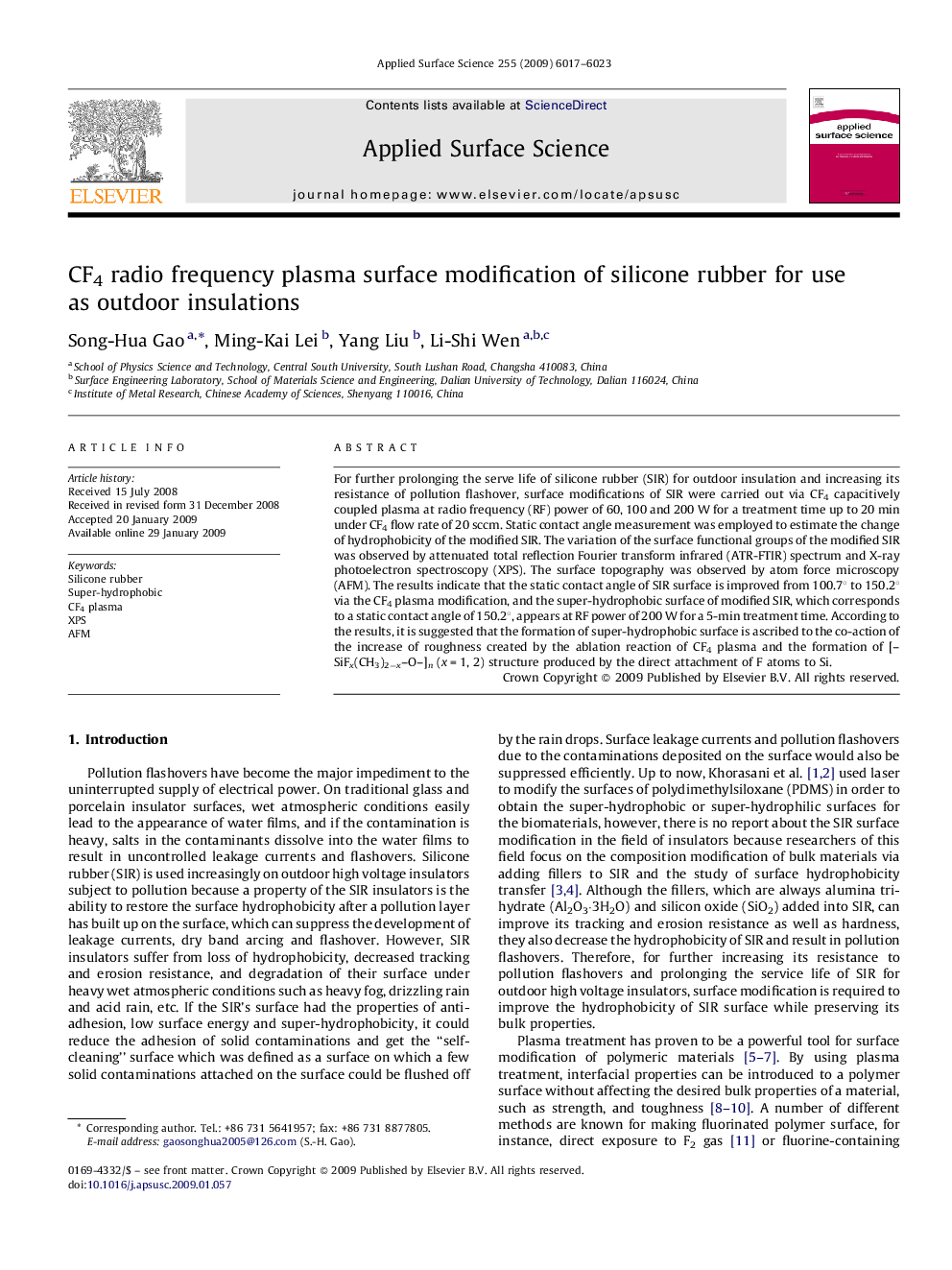| Article ID | Journal | Published Year | Pages | File Type |
|---|---|---|---|---|
| 5367320 | Applied Surface Science | 2009 | 7 Pages |
For further prolonging the serve life of silicone rubber (SIR) for outdoor insulation and increasing its resistance of pollution flashover, surface modifications of SIR were carried out via CF4 capacitively coupled plasma at radio frequency (RF) power of 60, 100 and 200 W for a treatment time up to 20 min under CF4 flow rate of 20 sccm. Static contact angle measurement was employed to estimate the change of hydrophobicity of the modified SIR. The variation of the surface functional groups of the modified SIR was observed by attenuated total reflection Fourier transform infrared (ATR-FTIR) spectrum and X-ray photoelectron spectroscopy (XPS). The surface topography was observed by atom force microscopy (AFM). The results indicate that the static contact angle of SIR surface is improved from 100.7° to 150.2° via the CF4 plasma modification, and the super-hydrophobic surface of modified SIR, which corresponds to a static contact angle of 150.2°, appears at RF power of 200 W for a 5-min treatment time. According to the results, it is suggested that the formation of super-hydrophobic surface is ascribed to the co-action of the increase of roughness created by the ablation reaction of CF4 plasma and the formation of [SiFx(CH3)2âxO]n (x = 1, 2) structure produced by the direct attachment of F atoms to Si.
